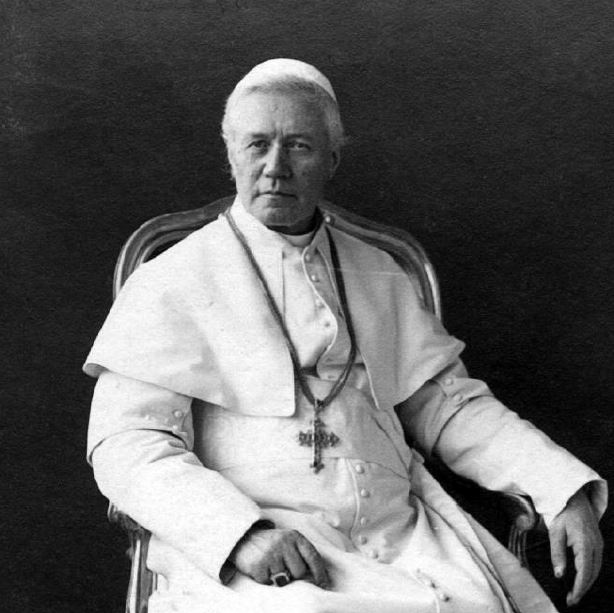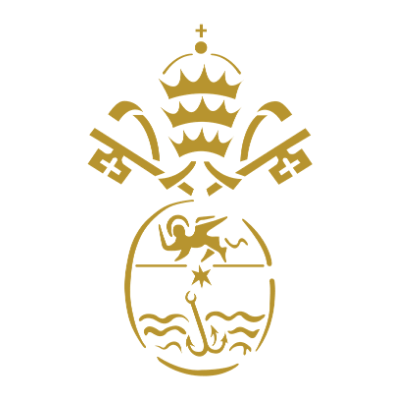The history of
St. Pius X Waterkloof
Catholic Parish

Guiseppe Sarto came from RIESE in Northern Italy. He was a humble man whose desire was to be a good Priest in a quiet Parish. However, Pope Leo XIII noticed him and was impressed by his holiness and brilliance.
In 1884, Sarto was made Bishop of Mantua and was elected Pope in 1903. He continued the policy of “A Prisoner of the Vatican” started by his predecessors and refused to leave the enclave throughout his reign, a difficult policy for a gregarious and people-loving person.
During the early years of his papacy, Pius X’s invigorating influence initiated the reform of Church music, the Priest’s breviary was revised. He came to be known as the Pope of the Eucharist, lowered the age of receiving the Sacrament to the age of reason – about 7 years old, thus everyone could receive many more times in their lifetime.
During the final years of his Papacy, Europe was in turmoil and Pius deplored the collision course being pursued by the contemporary World Powers. He foresaw the Holocaust of World War I and agonised over reports from France where Clergy were harassed, Germany where the Church was intimidated and threatened, Mexico where Bishops suffered humiliation and bodily harm and from the Seminaries in Rome where students were summoned back to their homelands to do their part in the coming war. He was besieged by requests to bless the cause of just one nation, then another. In frustration, the Pope told the Austrian Ambassador he blessed peace, not war. The stress of these final days affected the Pope’s health and a bronchial infection caused his death on August 20th, 1914.
Pius X was beatified by Pope Pius XII on the 3 June 1951 and Canonised by Pope Pius XII on 29 May 1954.
Nazareth House opened on 18 October 1951. It was here in the chapel, on 4 September 1954, merely months after the Canonisation of Pope St. Pius X that St. Pius X Parish came into being. A number of the original members are still with us today. Monsignor Frederic Mason was the first Parish Priest and Mass was held at the Nazareth House chapel as a temporary arrangement until a church could be built.
The Parish looked for a plot on which to build a church and decided on the present location. There was a considerable amount of organised objection throughout Brooklyn. Complaints about bells waking people on Sunday mornings, parking hazards and fears of blacks attending Mass made the community as far afield as Lynnwood Road apprehensive about having a Catholic Church in its midst. This caused a delay in having the plans passed. It was only in January 1956 that the Parish heard that the site was zoned for religious purposes.
Anthony Page, who was one of the major benefactors to the building fund, also contributed funds to Nazareth House where he was one of the first residents. His generosity to the diocese was recognised when Pope John XXIII awarded him the Bene Merenti Medal. The original church was designed by Mr. Anton Voorveld and built at a cost of R79 200. As funds were limited, the first structure did not include the present sanctuary and sacristy.
Nas Paola checked the original plans of the church and it was soon realized that the Parish would have to rely on generosity of parishioners to build the church. A campaign to collect funds was launched in the form of cake sales, jumble sales and bring and buys run by the Catholic Women’s League and eventually a building fund. Building Fund envelopes were handed out for this purpose. Even a parish dance was held.
The foundation stone of the church was blessed on the 3rd September 1957. Despite rain, the grand opening of the new church took place on 16 February 1958. The church was blessed on this day by His Grace, Archbishop John Colburn Garner. Furniture in the church had to be borrowed for the occasion. Monsignor served the parish as it’s priest, ably assisted by Fr. Tony Doherty until 1959 while Fr. Isidore Meher and Fr. Stephen Whyte stepped in from time to time. In June 1959 Mon. Mason was succeeded by Fr. Charles Runge who remained at the parish until 1962. During this time he was often assisted by a curate in the form of Fr. Neville Armstrong and Fr. Leo McLoughlin.
The original boundaries of the parish included Brooklyn, south of Nicholson Street, Waterkloof Ridge, Lukasrand, Groenkloof, Ashlea Gardens and Hazelwood. The latter two suburbs were incorporated into Lynnwood parish when it was founded and Brooklyn Road became the eastern boundary. Once Mount St. Bernard had been built, Johann Rissik Drive became the southern boundary. When the Monastery closed down in July 1982, the northern boundary was extended to and included Hillcrest.
In 1962 Monsignor Francis Ward, who was also involved with the Catholic Centre, took over from Fr. Charles and remained with the parish until he started St. John Fisher Catholic Church down the road in Lynnwood. The sanctuary, the sacristy and the hall were added on in 1968 when Fr. Kenneth Spargo was Parish Priest. Father Spargo, after staying in the parish for three years, was requested to move to Sunnyside parish after Fr. Tony Doherty’s sudden passing. Archbishop Garner had no replacement at the time. He asked the Franciscans at the Seminary if they could supply a priest to run St. Pius for the time being. In 1968 Fr. Matthew McDonald was asked to step in for one month, then for three months and he ended up staying for two decades. On 22 November 1968 the parish said farewell to Father Spargo and welcomed the Franciscan Fathers, in the person of Father Matthew. In 1978 the classrooms were erected, under Fr. Matthew’s guidance, and alterations were done to the bar and kitchen area. These additions were designed by Geoff Hussey and built by Mr. Pollabauer.
The house next door to the church was purchased for 6 000 Pounds from one of the main opponents of the church. This became the presbytery. It was later bought by the Franciscans for R12 000 after they had taken over the running of the parish. During the late 1990’s the purchase of the house from the Order was investigated and in 2006 the sale was agreed. The Baptistry was converted into the Cry Room for the convenience of parents with young children in the 1990’s.
Official catechism classes started in 1970. Prior to this, Sister Patrick, who ran Loreto Convent on the corner of Pienaar Street and Waterkloof Road, taught the small children catechism. She brought them to Mass every Friday morning. Children of the parish who attended government schools were taught catechism at Loreto Convent in Hillcrest and later at the Monastery. The ladies of the parish, Sister Theodula, and the seminarians contributed to launching this vital aspect of parish life.
House Masses were started in October 1969. The first house Mass was held at the home of the late Fred and Pat Pijper. The first Parish Council was elected in 1971 and Dr. H. Venter was appointed.
Fr. Dennis Moran succeeded Fr. Matthew after two decades of faithful service to the community of St. Pius X. After a couple of years Fr. Charles Steen followed him in 1991. Fr. Charles was ably assisted by Fr. Gil Wohler and Fr. Larry Landini. The turn of the century saw with it a change in parish priests for St. Pius in the form of the much loved Fr. Bonaventure Hinwood who was assisted often by Fr. Graham Bouwer.
Between 1982 and 1988 CathSoc was part of St. Pius X Parish. Their chaplain was Fr. Hyacinth Ennis and the youth enjoyed their Sunday evening Masses. The Chaplaincy then moved to Queenswood for a number of years and in the early 2000s Father Bonaventure became Chaplain to the students.
The Garden of Remembrance was built in 1998 and blessed on the 29th August of the same year, by the Archbishop George Daniel at the 6pm Mass. Little did Fr. Hyacinth know, but a few years after running CathSoc at St. Pius he would be asked to become our parish priest. In 2005 Fr. Hy took over from Fr. Bonaventure and was assisted, for a time, by Fr. Pedro Zitha.
After almost ten years Fr. Hy retired from parish pastoral ministry to work at the Franciscan Friary (otherwise known as the Kraal) and was succeeded by Fr. Tony Thouard, who came to us from the Franciscan church in Boksburg, St. Dominic’s.
Fr. Graham Bouwer is no stranger to the Parish, having been ordained here in in 2000 and replacing Fr. Tony in July 2019. We were again blessed when Fr. Peter Williams joined the Parish in 2019 to serve alongside Fr. Graham.
In early January 2021, Fr. Graham was transferred to St. Dominic’s Parish in Boksburg. We look forward to welcoming Deacon Hlonepho Nqaba, to serve alongside Fr. Peter.
January 2021
